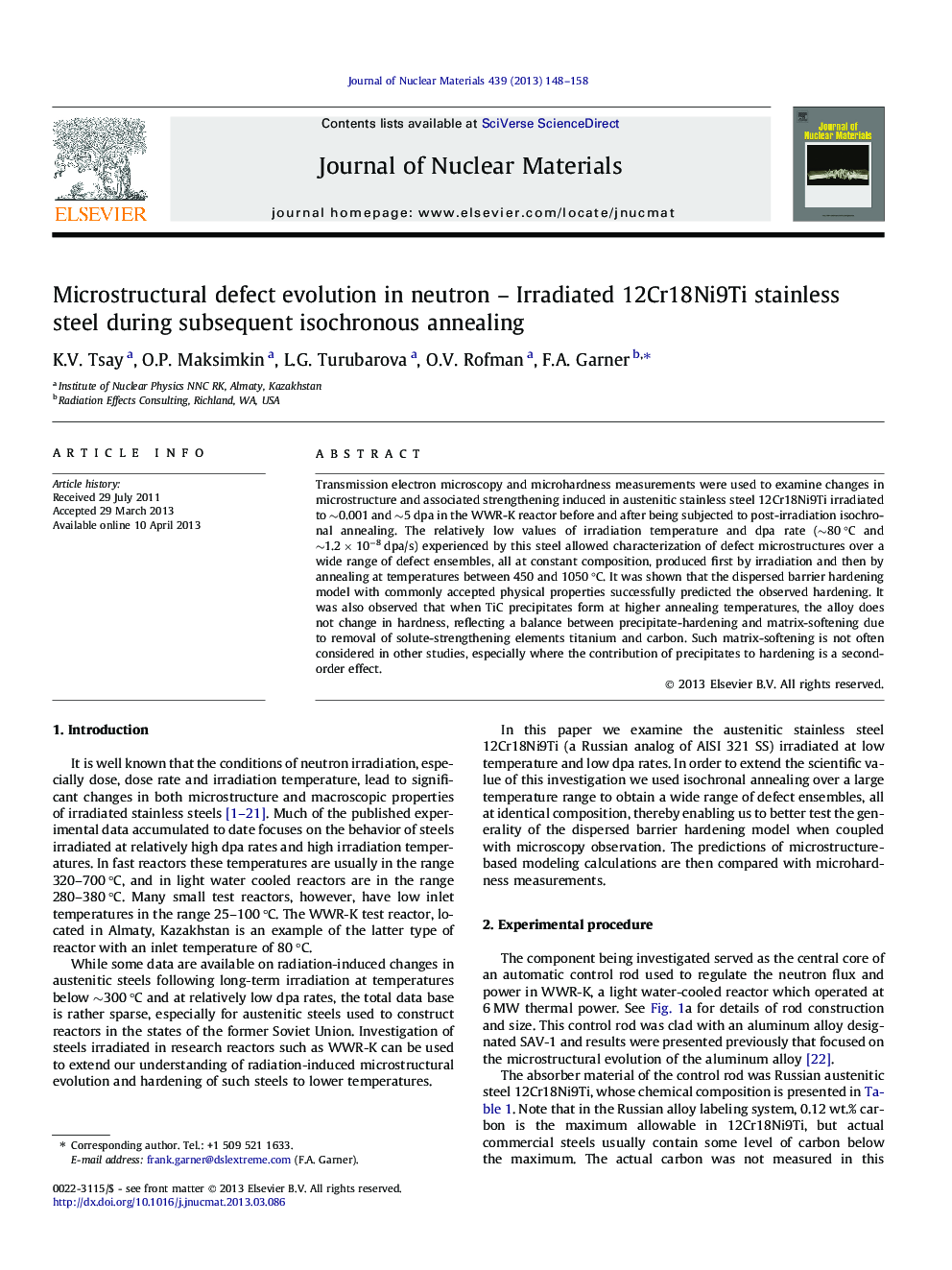| Article ID | Journal | Published Year | Pages | File Type |
|---|---|---|---|---|
| 1565623 | Journal of Nuclear Materials | 2013 | 11 Pages |
Abstract
Transmission electron microscopy and microhardness measurements were used to examine changes in microstructure and associated strengthening induced in austenitic stainless steel 12Cr18Ni9Ti irradiated to â¼0.001 and â¼5 dpa in the WWR-K reactor before and after being subjected to post-irradiation isochronal annealing. The relatively low values of irradiation temperature and dpa rate (â¼80 °C and â¼1.2 Ã 10â8 dpa/s) experienced by this steel allowed characterization of defect microstructures over a wide range of defect ensembles, all at constant composition, produced first by irradiation and then by annealing at temperatures between 450 and 1050 °C. It was shown that the dispersed barrier hardening model with commonly accepted physical properties successfully predicted the observed hardening. It was also observed that when TiC precipitates form at higher annealing temperatures, the alloy does not change in hardness, reflecting a balance between precipitate-hardening and matrix-softening due to removal of solute-strengthening elements titanium and carbon. Such matrix-softening is not often considered in other studies, especially where the contribution of precipitates to hardening is a second-order effect.
Related Topics
Physical Sciences and Engineering
Energy
Nuclear Energy and Engineering
Authors
K.V. Tsay, O.P. Maksimkin, L.G. Turubarova, O.V. Rofman, F.A. Garner,
